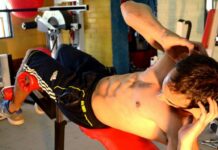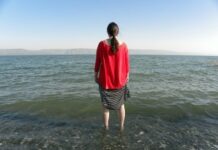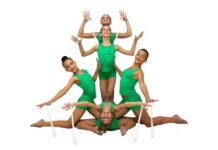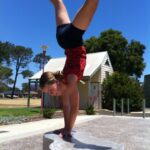Running barefoot… put like that and in the 21st century it sounds a bit strange, there are plenty of appropriate shoes to go running and there is no need to get complicated. This would be the thought of any person.
It is a new trend, known by the name of “running”. The United States emerges and little by little it has been introduced in other countries. With this new modality, what we want to achieve is to return to the basics, that is, to walk, to run as our ancestors did. As we can see, nothing new has been discovered, man at the beginning of time already did it.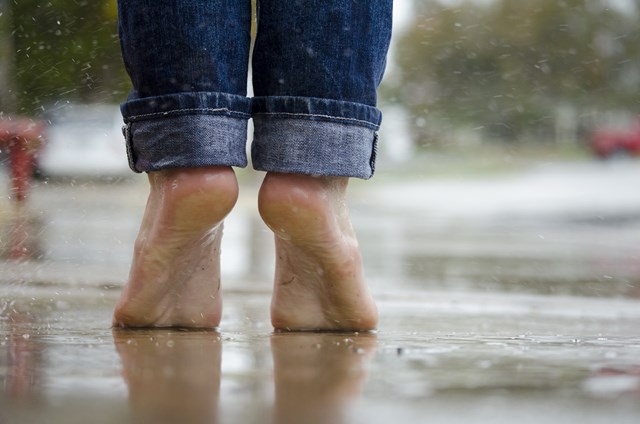
This new trend of “going back to basics” has led to studies being carried out in the last decade to find out the advantages and disadvantages of barefoot running. Among the advantages we can find, among many others, which we will talk about in this article later, with which our body learns to cushion itself, that is, it is capable of doing what the shoe would do, however, this does not It happens when we use running shoes, since it is this that acts as a barrier between our body and the ground, avoiding the impact that arises when our feet fall against the ground. It is very important to know that when we run barefoot the first point of support is the middle part of the foot, which does not happen when we run with shoes, in this case the first thing we support is the heel.
The first question that everyone asks when running barefoot is: what should I do to avoid hurting myself? Well, it’s simple, each part of our body is designed and can adapt to the work we send it. Of course, we must carry out this practice gradually, it is a change, as we all know, “any change” requires an adaptation period; this is something we learn throughout life and is applicable in all fields. In the topic we are dealing with, you cannot say: “Today I am going to run barefoot”, we have to adapt our feet little by little to this type of sport and to the ground.
This period can last for months, we will start running with the shoes with which we usually go out to play sports and over time we will reduce the thickness of the sole of our footwear until we wear minimalist footwear, as in the beginning of time, or we will begin to walk barefoot. If we opt for the second option, we will start walking slowly, gradually and with very short distances. Why do we start this way? It is very simple and logical; the main reason is that if we do it quickly, we would not be able to memorize well the movements that our feet make, managing to cause injuries to our body that in some cases can be very serious. To practice this trend, you have to start by having a lot of patience and using common sense, since the ultimate goal is to run barefoot without your body suffering.
The adaptation period varies from one person to another, that is, not all of us have the same abilities to adapt to a new situation that comes our way than others. In this case, the practice of this new sport depends; of the willpower of each person, of the sensitivity that each one has in the feet that, after all, are going to be the main sufferers and of the objectives that are set. Once we have managed to memorize the movements that our feet must make so that the body does not suffer and to be able to step barefoot on the ground, we should not start practicing this sport by running or walking long distances, as we have already said our body It would suffer too much, being able to appear burns, cuts, blisters, stress fractures, micro fractures, muscular overloads, etc.
The practice of running will be done slowly and gradually, that is, following a correct training plan as is done in any type of sports; such as rhythmic gymnastics, karate, etc., if our feet resist, we will increase the distance and speed, always gradually and following a training plan appropriate to our physical abilities. This adaptation period can last between two and four months, as we have said before, this depends on the sensitivity that each person has in their feet and the objectives that are set.
It is essential to learn this technique well if we want to practice this sport, the main reason is that there are no injuries. Any discomfort that we have in our feet can be due to poor practice of the technique or because we have done too much training. The best thing in this second case is to abandon the training and rest well, that is, take a step back in the training. Many athletes who have run in minimalist shoes and have gone directly to running barefoot have been injured; they have never perfected the technique. However, the runners who have learned barefoot have managed to perfect the technique and without any type of injury.
Where should I start practicing? It is preferable to start on hard and uneven floors, such as; a bike lane, asphalt… as long as they are in good condition. That is, there are no stones or other types of objects that could cause an injury. Beach sand or grass is not recommended at all.
The main reasons why we should choose this type of flooring are the following:
- Exercise the muscles and habituate the skin on the sole of the foot.
- Retrain our brain against the different sensations we perceive from our feet, pricks, burns, etc.
Previously we said that barefoot running had a series of advantages that we will now briefly describe:
- Improves the footprint; that is to say, when we step barefoot we do it using the front part of the foot, that is to say the arch and the fingers that distribute the weight of the body, especially the thumb. In this way we will avoid injuries to muscles and knees. However, when we step on shoes, we use the heels.
- It increases the information sent by the muscles of the feet to our brain, about the position in which they are, this makes us avoid a bad step and thus, ankle injuries are reduced, mainly ankle sprains.
- The ligaments and muscles of the feet, little exercised by wearing shoes, are significantly improved.
- Improvement in the posture of our body; makes it more upright and aesthetic. When running with shoes, the tendency of the body is to lean back.
- Slows heart rate; lower oxygen consumption, less energy is consumed than in traditional running.
- The distance we cover is greater than when we run with shoes, although the steps are shorter, the speed is greater.
- It reduces stress;
Like all things, this new practice also has its drawbacks, although they are not of vital importance or they cause serious injuries. Normally these tend to occur at the beginning of training as in all sports in their beginnings. In this case we would be talking about burns, cuts or blisters on the feet.


